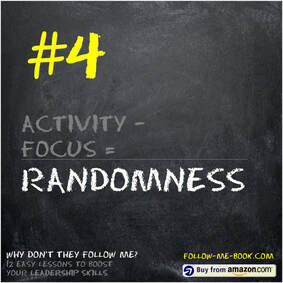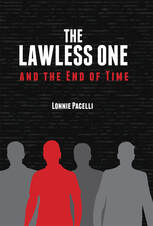
Tom looked at the clock.
“Midnight,” he said to himself as he took a sip of coffee. The milestone review for the second phase of the project was the next day. As he updated the project plan, he came across the organizational change management tasks that were supposed to be done in phase one that got pushed to phase two. He saw that the tasks were still zero percent complete. “We’ll pick them up later,” he said to himself as he added the tasks to the phase three workplan. During the milestone review the next day, Tom’s manager, Gayle, asked about the incomplete organizational change management tasks. “Ran out of time,” Tom said. “We’ll get them done in phase three.” “Isn’t that what you told me three months ago during our phase one review?” Gayle asked. Tom looked down. “Um, yeah,” he said. “Phase three is even more intense than phase two, what makes you think you’ll get the OCM tasks done in phase three if you didn’t get them done in phase one or two?” “Gayle, we’ll get them done,” Tom said. “OK, I’m holding you to it, Tom.” Three months later, at the phase three milestone review, Tom walked through the workplan, then got to the OCM tasks. Tom knew what was coming. “Still not done,” Gayle said as Tom avoided her gaze.
0 Comments
 My fiction book, The Lawless One and the End of Time, has four main characters who meet at age 14 in Naples, Italy and all grow into globally-recognized figures. One of the characters, Bert Winn, was fascinated with history. He loved the concreteness of historical facts; they either happened or they didn’t. He met and fell in love with Laura, a math major he met in college. He graduated college with a Ph.D. in history and became an acclaimed professor. Bert and Laura married and had a son they named JT. The Winn family became internet celebrities and millions of people subscribed to their online video blog. Subscribers loved to hear their messages of fact, inspiration, and challenge. Their message? An unvarnished, inspirational view of life with Autism Spectrum Disorder. Bert started showing signs of autism at eighteen months with speech delay, difficulty maintaining eye contact, and a dislike for being cuddled. As Bert grew, he and his mother developed strategies for how to accommodate some of Bert’s sensitivities, such as a “beach ball kiss,” in which an imaginary beach ball filled space between them when they kissed hello and goodbye. Laura too had sensory issues, particularly with clothing fabrics. The two of them learned to cope with their sensitivities through the years, so they became normal for them. It also felt normal for their son, JT, to be on the autism spectrum. They didn’t view themselves as people to be pitied, but used the opportunity to help others understand the world of autism and how people on the spectrum could thrive just like anyone. Their story educated and inspired millions and gave those affected by autism hope. The story of Bert, Laura, and JT were heavily influenced by my wife Patty’s and my experience raising our son Trevor. He was diagnosed with Autism Spectrum Disorder at age five (the clinical diagnosis was Pervasive Developmental Disorder, Not Otherwise Specified or PDD-NOS) back in 1998. At the time, autism wasn’t well known and our only exposure to it was Dustin Hoffman’s character in Rainman. We had no idea what the future had in store for us as a family. Would he ever graduate high school? Would he drive? Would he have relationships? Through the years Trevor amazed us with what he was able to do and how he learned to cope with his autism. Today he is a college graduate who lives on his own, drives, works, and has an active social life. Yes, he has challenges that will be with him for the rest of his life. But we learned an important lesson with Trevor; the moment we underestimated him he proved us wrong. You may have your own perceptions of people with disabilities, whether it be physical (paralysis), cognitive (autism), present at birth (Down Syndrome) or related to an injury (amputation due to an accident). Your perceptions may be due to personal experience, observing a friend or loved one, or what you see in the media. Your perceptions may be inclusive or biased. Only you can decide. So, what’s your action? Educate yourself. Disability:IN, American Association of People with Disabilities, Special Books by Special Kids, Autism Speaks, Center for Disease Control and Prevention’s Disability and Health Overview, and Northwest Center are some great resources to help you better understand people with disabilities. Do your own web searches, just make sure the information you’re taking in is from credible sources. Take the time to learn more about disabilities and focus less on the “dis” and more on “abilities.” Oh, and if you want to learn more about Bert, Laura and JT’s story, check out The Lawless One and the End of Time. Lonnie Pacelli
Keynote Speaker | Board Director | Autism Advocate | Author | Project Management Expert | Microsoft/Accenture Veteran See his books on Amazon. 
On a recent project my company was working with a frozen seafood manufacturer to help them bring a specialty frozen seafood product to market.
A huge component of getting this project done was the packaging; it had to be eye-popping and appealing while protecting the frozen seafood pieces inside. After a number of design sessions with the packaging manufacturer, we received the finished packaging. What was initially exuberance during the design session turned into disappointment when we saw the finished product. Some of the graphics were a bit blurry, a re-sealable zipper wasn't included, and a clear window to view the contents inside was missing. Our emotions went from disappointment to anger as the manufacturer told us it would be a number of weeks before a new delivery of the packaging could be done. If we took this route, a key delivery to a very important customer of ours wouldn't be met. What a pickle. 
Friday looked to be like any other day.
I got up, had breakfast, and left the house around 8:30 for a day of meetings. We had planned on having another couple over for dinner that night and a day trip with our son on Saturday. About noon, Patty called me saying she had a pain in her abdomen since getting up and it was getting worse. I asked her if she wanted me to come home. She told me she didn’t need me home, but that we should probably cancel dinner in the event she had something contagious. I was out for a few more hours and came home to her sitting on the couch, saying the pain wasn’t going away. Her temperature was 101. We talked to a tele nurse who suggested it might be an infection and that we should go to urgent care. After a short wait we got checked in. The pain continued on, now accompanied by nausea. They ran blood tests then, after seeing the results, decided to do a computed tomography (CT) scan of her abdomen. What did the blood tests reveal? Why the CT scan? What were they looking for? What’s going on? These questions raced through my mind as they took Patty away for the scan. About ten minutes later she came back, where we sat and waited for about two hours; Patty’s pain stubbornly persistent along with the nausea. Then the doctor came in. 
It’s Monday morning and Joe gets up at 6:00. He showers, eats breakfast and
makes his way to the train station to catch the 7:20 into Chicago. During the 40-minute train ride, Joe takes out his planner and lists out all of the things that he wants to get done for the week. He writes down all of the people that he needs to call, meetings that he needs to schedule, and reports that he needs to write. By the time the train pulls into Union Station, he has his entire week planned out and is feeling very good about his plan. His 20-minute walk from the train station to his office is pleasant and energizing, and Joe arrives at his office ready to get going on his plan. |
Topics
All
Reprints
Contact Lonnie about article reprints. Please specify article you wish to reprint. Backlist
See Lonnie's Amazon Author Page Archives
July 2024
|
Lonnie Pacelli - Building Thriving Leaders™
Insightful | Creative | Direct Advice to Help Leaders Help Themselves
Keynote Speaker | Board Director | Autism Advocate | Author | Project Management Expert | Microsoft/Accenture Veteran
See his books on Amazon
Insightful | Creative | Direct Advice to Help Leaders Help Themselves
Keynote Speaker | Board Director | Autism Advocate | Author | Project Management Expert | Microsoft/Accenture Veteran
See his books on Amazon
Services |
About
|
© COPYRIGHT 2019. ALL RIGHTS RESERVED.
We are a participant in the Amazon Services LLC Associates Program, an affiliate advertising program designed to provide a means for us to earn fees by linking to Amazon.com and affiliated sites.
|

 RSS Feed
RSS Feed